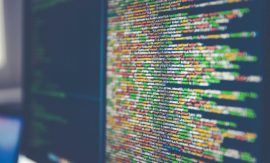Intended learning outcomes: Describe some typical modules of software for the process industry. Identify specific software packages.
The processor-oriented concept for the process or basic producer industries requires appropriate ERP software, that is, in which the emphasis is placed on mixing ratios and recipes, rather than on bills of material.
Software for the processor-oriented concept largely originates from the chemical, pharmaceuticals, and food industries in the United States or Germany. It includes software such as Blending from Infor, Infor LX (in the past Bpics), Cimpro from Palomino Computer Solutions, Ross ERP from Apten, MFG-PRO from QAD and, in the past, Protean (once Prism from Marcam).
Figure 9.2.3.1 shows typical modules that make up such software by way of example. The make up highlights the emphasis placed on resources and on the production model (processor-oriented production structures as described in Chapter 8).
Fig. 9.2.3.1 Software for the process industry: some typical modules.
Problems specific to the process industry that are covered include:
- Different lots of a bought-in product have different characteristics and must thus be handled differently (e.g., production of tomato products: addition of sugar according to the sugar content of the tomatoes, use of different grades for different products).
- The process industry often uses by-products, recycled products, or waste products. The traditional representation of product structures in the form of bills of material is not suitable for such cases.
- Planning & control do not just apply to materials. They are of equal importance for capacity and production equipment (e.g., molds for manufacturing chocolate bars).
Electronic control boards (“Leitstand”) software packages are used for IT support of master production scheduling. These packages take account of the limited capacity typical of such industries and, by changing these limitations, allow reliable and appropriate production schedules to be created (constraint-based techniques).
Course section 9.1: Subsections and their intended learning outcomes

9.2 Contents of ERP Software and SCM Software
Intended learning outcomes: Describe classical MRP II / ERP software. Present software for customer order production, for the process industry, for transcorporate planning & control in a supply chain, and for Customer Relationship Management (CRM). Differentiate between standard and company-specific software.

9.2.1 Classical MRP II Software / ERP Software
Intended learning outcomes: Present SAP R/3 as a typical example of a classical, generally applicable ERP software package.

9.2.2 Software for Customer Order Production or the Variant-Oriented Concept
Intended learning outcomes: Describe typical software modules for customer order or variant-specific production. Identify specific software packages.

9.2.3 Software for the Process Industry or the Processor-Oriented Concept
Intended learning outcomes: Describe some typical modules of software for the process industry. Identify specific software packages.

9.2.4 SCM Software or APS Software — Software for Transcorporate Planning & Control in a Supply Chain
Intended learning outcomes: Describe the concept and some of the tasks performed by SCM software. Identify specific software packages.

9.2.5 CRM Software — Software for Customer Relationship Management
Intended learning outcomes: Produce an overview on the representation of the objects and their interrelationships of CRM software.

9.2.6 Standard Software or Company-Specific Software?
Intended learning outcomes: Explain various reasons why some companies still need company-specific software. Disclose aspects that should be taken into account when choosing between standard and company-specific software.
